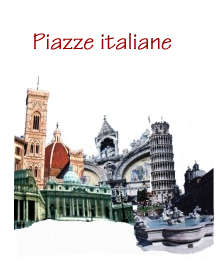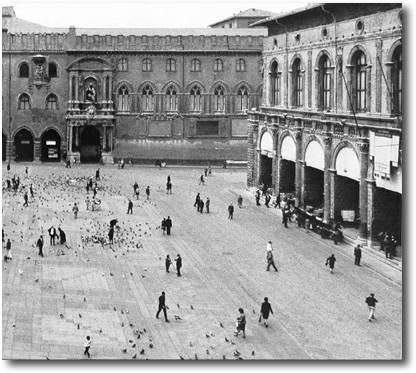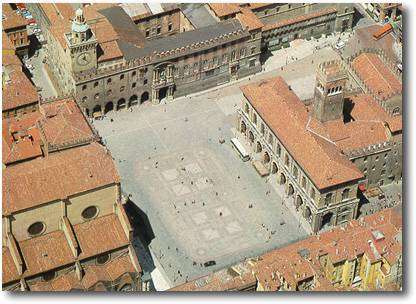
Piazza Maggiore
Acror the road, the beautiful square Galvani, named for the Bolognese scientist Luigi Galvani, to whom the marbe monumaewnt is dedicated.
And now, backagain to sqare Maggiore, where other piaces of the puzzle define the imposing palace dei Banchi, scenografically dominated by the massive palace del Podestà and by thedomeof Santa Maria della Vita,the church which holds the thrilling sight of a moving work of art: Nicolo dell’Arca’s terracotta Piatà.
The porch tiles all decorated with different motifs, almost the echo of an ancient and mysterious anthropomorphic,zoomorphic bblend of heraldryand froral ornaments on the fifteenth century columns with romanesque traces.
 This
is the main square of Bologna, opened in the middle of the city in
the 1200. The main monuments of the political and religious power
take place all around it. In the traditional celebration as in the
daily life, this square has always been a meeting point for the inhabitants
and the place where the main important social rites of the community
were shown.
This
is the main square of Bologna, opened in the middle of the city in
the 1200. The main monuments of the political and religious power
take place all around it. In the traditional celebration as in the
daily life, this square has always been a meeting point for the inhabitants
and the place where the main important social rites of the community
were shown.
Authors: Enrico e Stefano
